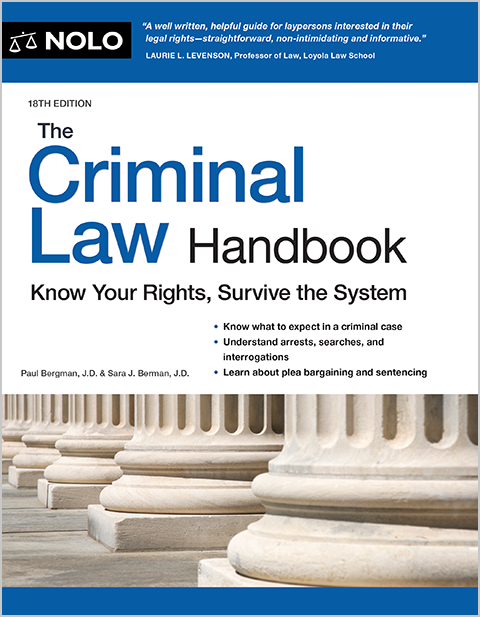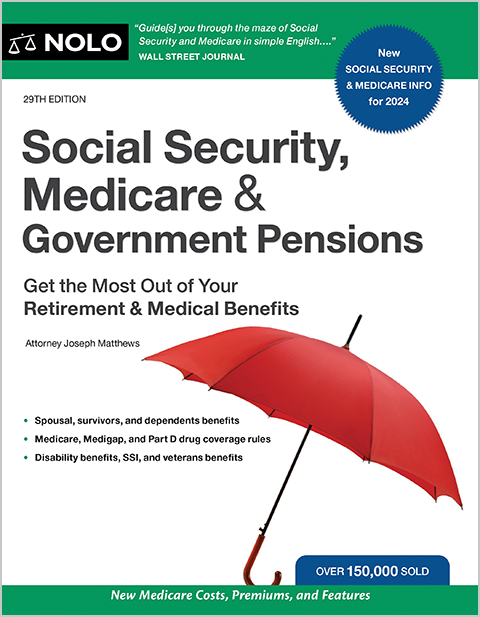Learn when breast cancer patients are eligible to receive SSDI, SSI and veterans' disability benefits.
Breast cancer is one of the most commonly diagnosed cancers in the United States, accounting for about one-third of all types of cancer in women. Men can also get breast cancer, although its incidence is rarer (less than 1% of cases). When caught early, breast cancer has a high survival rate, but treatments such as chemotherapy and radiation can often take a significant mental and physical toll in the meantime.
If you've been diagnosed with breast cancer and aren't in remission—meaning there are no signs or symptoms of the cancer left in your body—within one year, you could qualify for Social Security Disability Insurance (SSDI) or Supplemental Security Income (SSI). Advanced stages of breast cancer may qualify for expedited approval under the agency's Compassionate Allowances program.
- When Is Breast Cancer Considered a Disability?
- Getting Disability Under the Medical Listing for Breast Cancer
- Getting Disability for Breast Cancer Under a Medical-Vocational Allowance
- VA Disability Ratings for Veterans With Breast Cancer
- SSDI and SSI Amounts for Breast Cancer
- How Do I Apply for Disability Benefits?
When Is Breast Cancer Considered a Disability?
Social Security awards disability benefits to people who have a medical impairment that keeps them from working at the level of substantial gainful activity for at least one year. So if your cancer was caught early, successfully treated, and you returned to full-time work within twelve months, you won't be eligible for SSDI or SSI, no matter how debilitating your symptoms were during that time.
If you've been (or expect to be) out of work for at least a year for treatment, you can get benefits in one of two ways—by meeting the medical requirements for automatic disability or by having significant functional limitations that rule out all full-time employment. While the disability determination process can often take several years, if you have breast cancer that has extensively spread and can't be operated on, you can get a Compassionate Allowance award in as little as a few weeks.
Getting Disability Under the Medical Listing for Breast Cancer
The Social Security Administration (SSA) maintains a list of medical impairments—also known as the Blue Book—that the agency considers especially severe. The Blue Book contains over 100 medical diagnoses and a set of criteria for each that are sufficient to be automatically disabling. In other words, if you have evidence in your medical records showing that your breast cancer has spread to specific parts of your body or keeps coming back despite treatment, the SSA will find you disabled without having to determine if you're able to work.
To meet listing 13.10 for breast cancer, you'll need to have documentation of at least one of the following:
- locally advanced cancer (generally meaning stage 4 breast cancer that hasn't spread very far from the breast)
- carcinoma that's either spread to the lymph nodes in the head or neck, spread to 10 or more lymph nodes in the armpits, or spread to other parts of the body that are further away
- recurrent carcinoma, except for small, local carcinomas that can be treated with anticancer therapy
- small-cell (oat cell) carcinoma, or
- cancer with secondary lymphedema (swelling in the upper extremities caused by anticancer therapy) if the lymphedema requires surgical intervention.
The SSA will want to see medical evidence of your breast cancer, such as the results of a breast exam, mammogram, biopsy, or MRI. These tests should indicate the type, stage (0 to 4), size, and location of your breast cancer, including whether it has spread (metastasized) to other regions. Your medical records should also include admission and discharge notes for any hospitalizations you've had, as well as progress notes for your anticancer treatments such as radiation or chemotherapy.
For more information about the types of evidence the SSA will examine when looking at cases involving inoperable, unresectable, recurrent, or metastasized tumors, see our article on getting Social Security disability benefits for cancer.
Getting Disability for Breast Cancer Under a Medical-Vocational Allowance
Only claimants with the most aggressive forms of breast cancer are likely to get disability benefits under listing 13.10. But you can still qualify for SSDI or SSI if you have long-term effects from cancer treatment that keep you from working at any job on a consistent basis. In Social Security lingo, being awarded benefits this way is known as a medical-vocational allowance.
The agency will determine whether you should get a medical-vocational allowance by looking at a combination of factors such as your age, education, work history, and your residual functional capacity (RFC). Your RFC is an assessment of what you can and can't do at work, physically and mentally. It describes what "leftover" (residual) activities you can still perform despite your limitations from breast cancer treatment.
What's In Your RFC?
Social Security reviews your medical records, daily activities, and doctor's opinions to determine the extent to which your symptoms limit your ability to function in a work environment. For example, chemotherapy patients often report intense side effects such as nausea, fatigue, mood swings, and memory loss. These symptoms can translate into an RFC that limits work involving heavy lifting, complex tasks, or extensive public interactions. A typical RFC for somebody with breast cancer could include restrictions on the following:
- how long you're able to sit, stand, and walk
- the maximum amount of weight you're able to lift and carry
- whether you can use your arms to reach overhead, below your waist, or to your sides
- how long you can use your hands and fingers to type or move small objects
- the amount of time you can spend with coworkers, supervisors, or the general public
- whether you can perform complex, detailed, or unskilled tasks
- how long you can stay focused in a workday, and
- if you can maintain attendance and punctuality consistent with employer tolerances.
The more severe your symptoms are, the more limitations you'll have in your RFC. So if you have moderate pain and fatigue that keeps you from being able to stay on your feet all day, your RFC might limit you to sit-down, unskilled work. But if your pain is severe enough to cause you to be absent several days per month, your RFC might restrict you from even the simplest full-time sedentary jobs.
How Does Social Security Use Your RFC?
After assessing your limitations, Social Security compares your RFC to the requirements of your past work to see if you could do those jobs today. If you're able to return to your old line of work, the agency can't find you disabled, and you'll be denied benefits. If you're unable to do your past work, the agency must then determine whether any other jobs exist in the national economy that you could still perform with your current RFC.
For most people under the age of 50, this means needing to show that you're unable to perform the least physically and mentally demanding jobs (what the SSA calls unskilled, sedentary work). Claimants who are 50 years of age or older may have an easier time qualifying for benefits using a special set of regulations called the "grid" rules. This is because as you approach retirement age, Social Security takes into consideration whether you have any transferable skills that can make it easier for you to switch careers, while younger individuals are assumed to have enough time before retirement to learn new skills.
VA Disability Ratings for Veterans With Breast Cancer
Veterans with a service-connected medical condition can be assigned a disability rating percentage and receive VA compensation on that basis. Under diagnostic code 7630 for malignant neoplasm of the breast, veterans are entitled to a 100% VA rating for up to six months after the end of any anticancer treatment.
After six months have passed, the VA will send you to an examination to determine whether the rating should be lowered using a new diagnostic code (7626) for breast surgery. Below you can find the chart used by the VA to decide what percentage rating to assign following surgery for breast cancer.
|
Procedure |
Percentage Rating |
|
Radical mastectomy (complete removal of breast and underlying pectoral muscles) |
One breast: 50% Both breasts: 80% |
|
Modified radical mastectomy (complete removal of breast leaving pectorals intact) |
One breast: 40% Both breasts: 60% |
|
Simple mastectomy (removal of breast tissue, nipple, and small portion of overlying skin) |
One breast: 30% Both breasts: 50% |
If you've had breast surgery to remove the malignant tumor but didn't experience a "significant alteration of the size or form" of the affected breast, the VA will reduce your rating to 0%, meaning you won't get monetary disability compensation for breast cancer but can still qualify for VA health care and other benefits.
SSDI and SSI Amounts for Breast Cancer
Social Security doesn't pay benefits based on the kind of disabling condition you have—if you qualify for disability you'll receive the same amount for breast cancer as you would for depression. Instead, your monthly check depends on the type of benefit program you qualify for. SSDI amounts are calculated from your earnings history, while SSI payments consist of a flat monthly rate minus any countable income you have for that month.
For 2025, the maximum amount you can receive in SSDI is $4,018 per month (up from $3,822 in 2024), but the average payment is much lower, around $1,600. That's because SSDI is based on individual wage history, which varies greatly between beneficiaries. SSI payments are based on the federal benefit rate, which in 2025 is $967 per month (up from $943 in 2024). Some states have additional cash supplements for SSI recipients, but they are often modest amounts.
How Do I Apply for Disability Benefits?
Social Security has several methods you can use to file for benefits, depending on whether you're applying for SSDI or SSI. The most convenient way to start your application is by using the agency's web portal. SSDI applications can be completed entirely online, but if you're filing for SSI, a representative will contact you to finish the application in person or over the phone.
Both SSDI and SSI claims can be filed by calling the national Social Security hotline at 800-772-1213 (TTY number at 800-325-0778) between 8 a.m. and 7 p.m., Monday through Friday. You can also go in person to your local Social Security field office. Field offices are generally open weekdays from 9 a.m. to 4 p.m., although some require that you make an appointment before you drop by, so it's wise to call ahead and ask.
Veterans can apply for disability compensation by completing Form 21-526EZ, Application for Disability Compensation and Related Compensation Benefits. The easiest way to do this is to file the electronic version online, but you can also print out the form and fax it to 844-531-7818 or 248-524-4260 (from outside the U.S.) or bring it to your local VA office.
You aren't obligated to get an attorney to file for SSDI, SSI, or VA benefits, but it's usually a smart idea. An experienced Social Security advocate or VA disability lawyer can help you navigate each agency's appeals process, gather the proper medical records needed to document your breast cancer treatment, and represent you at a hearing if necessary. Most disability lawyers work on contingency—meaning they don't get paid unless you win—so you'll have few, if any, out-of-pocket costs.
- When Is Breast Cancer Considered a Disability?
- Getting Disability Under the Medical Listing for Breast Cancer
- Getting Disability for Breast Cancer Under a Medical-Vocational Allowance
- VA Disability Ratings for Veterans With Breast Cancer
- SSDI and SSI Amounts for Breast Cancer
- How Do I Apply for Disability Benefits?

